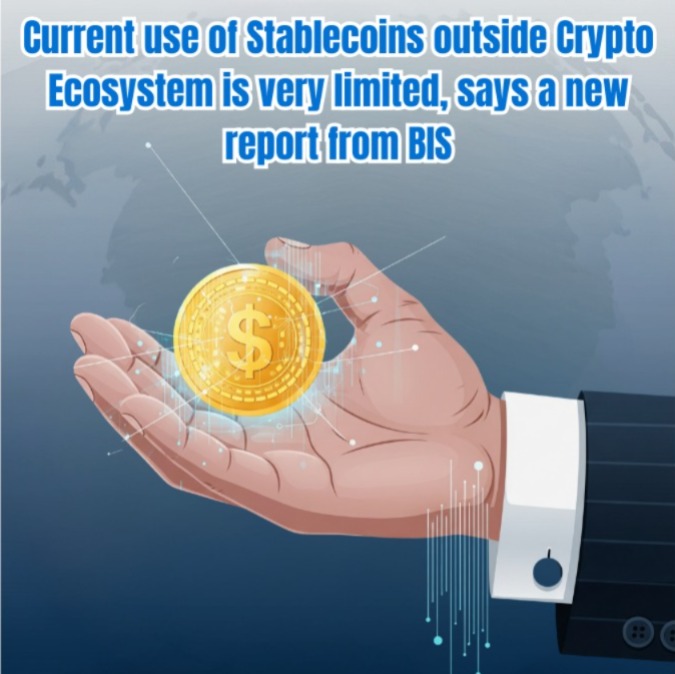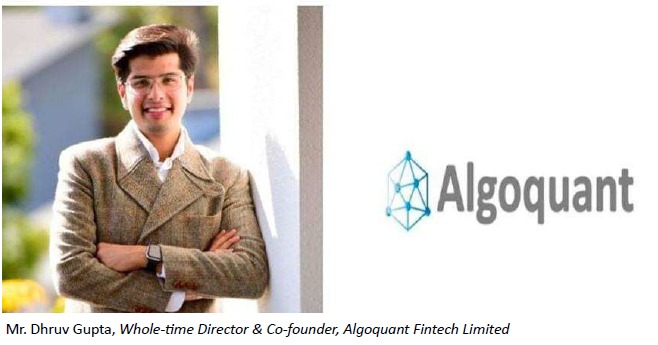In August 2025, the Bank for International Settlements released the results of their annual survey on Central Bank Digital Currencies and Crypto. The survey was conducted in 2024 with 93 central banks from across the world, out of which 73 had also participate in the earlier edition. These respondents represent 78% of the world’s population and 94% of global economic output. Interestingly, 28 respondents are from advanced economies whereas 65 are central emerging market and developing economies.
The most interesting outcome of the survey is the coverage on stablecoins. These are special crypto tokens which are pegged to a currency. For example, a stablecoin known as USDT is pegged to US Dollar while EURC is pegged to Euro and JPYC is pegged to Japanese Yen. These have been used mostly in the crypto trading as the intermediary holding instrument.
The survey outcome indicates that the use of stablecoins for payments outside the cryptoassets ecosystem is still limited. Most central banks indicated that the use of stablecoins within their jurisdictions for payments is trivial. Other than for cryptoasset trading or in decentralised finance, niche groups mainly use them for domestic retail payments (20%), remittances (21%) and cross-border retail payments (20%). A few central banks reported some use of stablecoins in their jurisdictions for domestic wholesale payments (1%), domestic retail payments (1%), cross-border payments (3%) and remittances (4%).
However, 45% of jurisdictions have enacted regulation for stablecoins and other cryptoassets (up from 35% in 2023). Moreover, 22% of jurisdictions have proposed or are developing a regulatory framework. This means that more than two out of three jurisdictions worldwide currently or will soon regulate stablecoins and other cryptoassets. Most jurisdictions have opted for or are developing regulation that is bespoke to cryptoassets or to stablecoins, instead of relying on or changing existing general financial regulations. Examples of jurisdictions that have or will soon have tailored regulation for stablecoins include USA, Hong Kong SAR, Singapore and the United Kingdom. Argentina, Australia, Brazil, Mexico and the European Union are examples of jurisdictions that have developed or proposed tailored regulation for cryptoassets more generally.
The survey also mentions that only 8% of participants indicated that commercial banks in their jurisdiction had issued stablecoins. Examples of those that have included ANZ in Australia, KBC in Belgium, BTG Pactual in Brazil and Société Générale in France. These stablecoins have generally been issued for specific use cases, such as for crowdfunding, pension payments, intra-bank or intra-banking group transfers or to offer clients a means to bridge the traditional financial system and the digital assets world. The use of stablecoins by traditional financial market infrastructures, such as a collateral asset, an investment instrument or a settlement asset for money settlement was negligible.
As per the survey report, it is paramount that jurisdictions uphold the timely and consistent implementation of international standards and recommendations to prevent regulatory arbitrage given the borderless nature of stablecoins and cryptoasset activities. Regulatory consistency will also promote responsible innovation, protect consumers and investors.
Another interesting output is that in nearly half (48%) of the responding jurisdictions, private or public sector entities had engaged in work related to tokenisation of financial or real assets at the end of 2024. While this entails research and/or proofs of concept in most cases, in 38% of these jurisdictions, tokenised assets have been issued and a similar number of jurisdictions are piloting or working on live issuance – although most of this work has happened in advanced economies.
Overall, the survey results reflect that the payments and settlement landscape is undergoing a multitude of changes. Digital innovations and tokenisation offer an opportunity for central banks to reflect on the role of central bank money. For India, this presents a wonderful opportunity to experiment with various such models – CBDC, Stablecoins and Asset Tokenization, and evaluate the best way forward for its economic growth.

















Leave a Reply